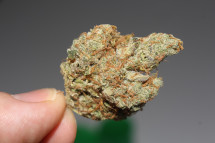How to determine personal use in drug legislation The “threshold controversy” in the light of the Italian experience
Distinguishing between drug possession for personal use and supply and trafficking is widely acknowledged as one of the most difficult and controversial issues facing drug legislators and policy makers.

Authors
According to the former, pre-defined quantities of the substances are presumed for personal use, while in the flexible model (or “discretionary system”) the court rules whether possession of drugs is intended for personal use or for supply, taking into account all the available circumstances.
The purpose of this paper is to examine the advantages and the shortcomings of the different options, based on the Italian experience, as well as their real effectiveness in dealing with the problem.
The main shortcoming of the threshold model (both in the "daily average dose" and in "the maximum quantity allowed" versions) is the risk of indiscriminate criminalisation of drug users, who have an amount of substance above the threshold. Paradoxically, the threshold system is particularly inappropriate and unfair in the context of illegal markets, where it is difficult for users to have control over the quantity and purity of the substance in their possession. Moreover, the threshold model does not meet basic legal principles as it relies on a presumption of guilt, a reverse of burden of proof.
In this perspective, the "flexible" model is preferable. Regardless, none of these models address the necessity of differentiating between users and dealers adequately.
CONCLUSIONS & RECOMMENDATIONS
• In distinguishing between drug use and supply, the “threshold system” has many disadvantages. The “discretionary system” is preferable, although it does not solve the problem completely.
• The main shortcoming of the threshold model is its presumption of guilt of dealing for users in possession of quantities above the threshold, which has led to unfair levels of criminalisation.
• To definitively address the distinction between users and dealers, a change in the very framework of drug legislations is required, clearly establishing possession as a crime only when intended for sale.
Pages: 12